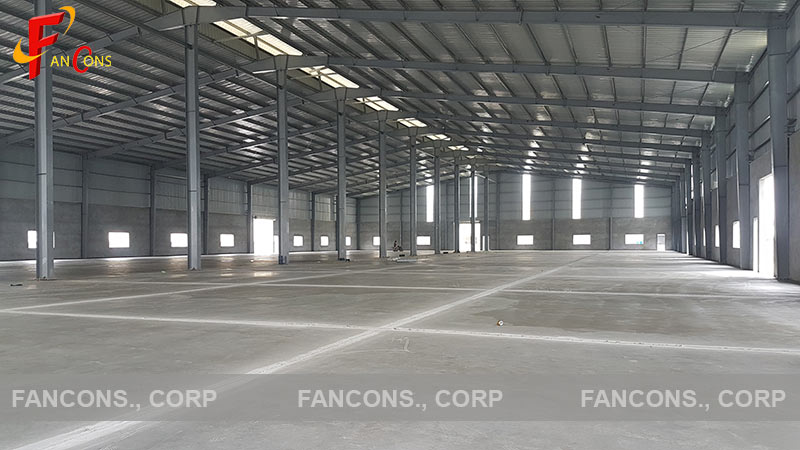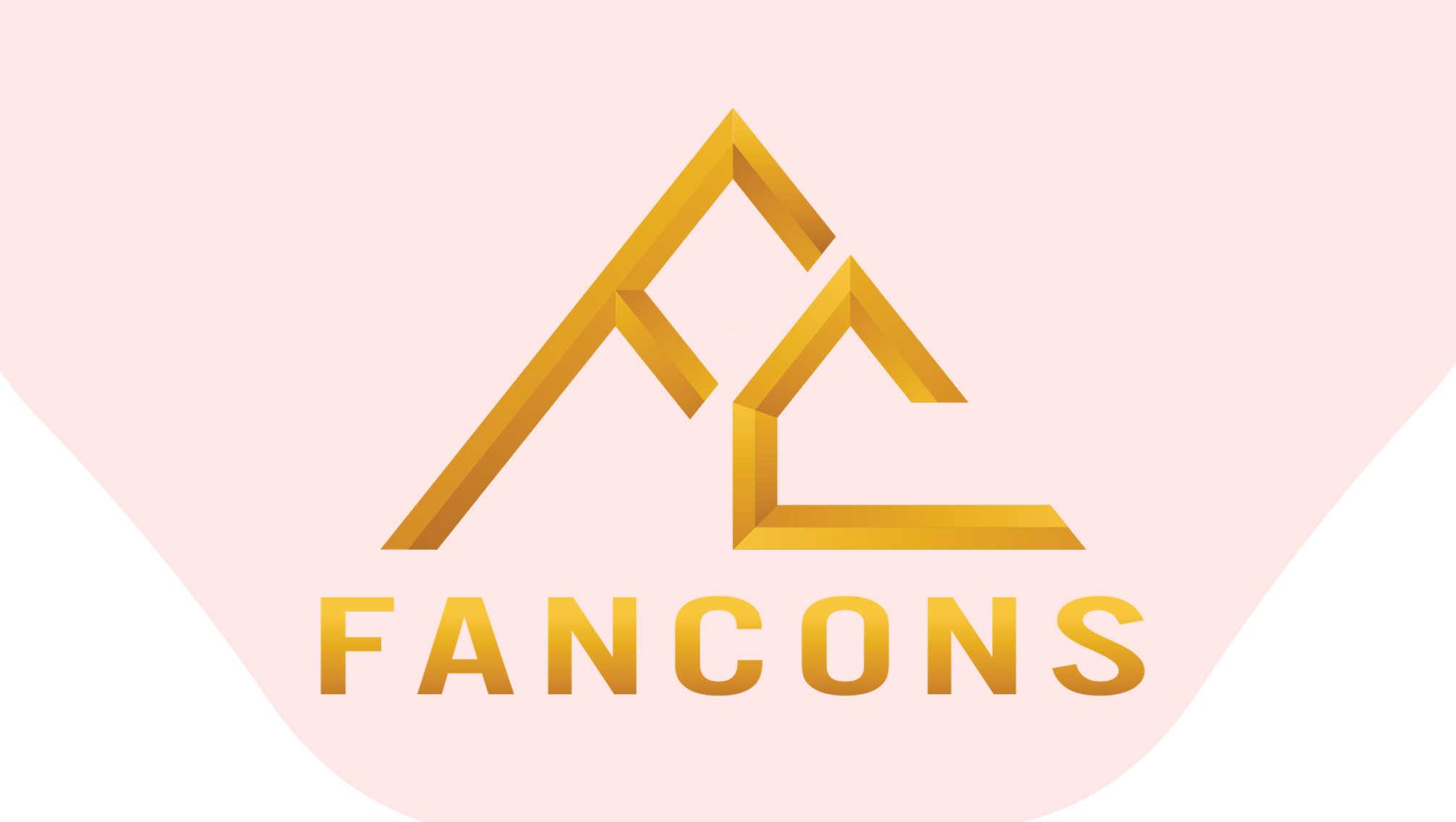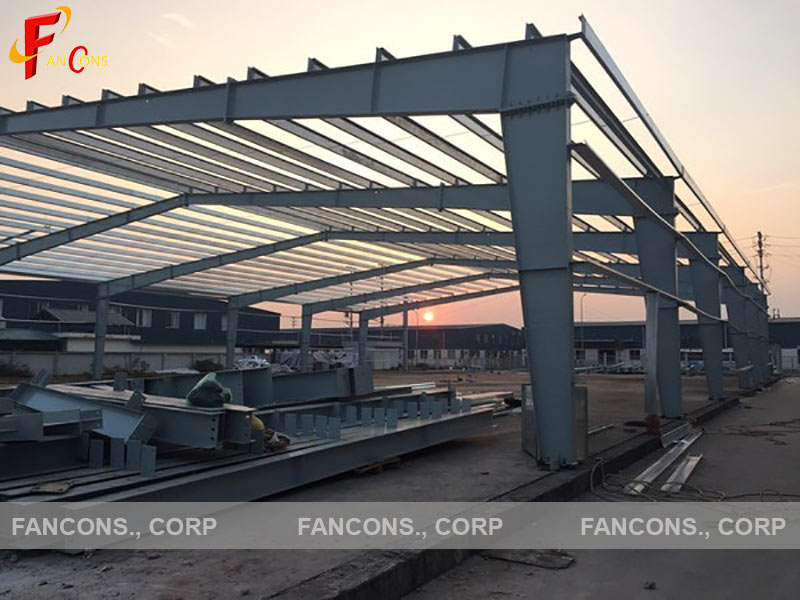The installation of steel structures and frame systems in construction often involves working at heights. This increases the risk of falls, which, if not properly managed, can significantly impact the entire construction process.
The installation position of steel structures is usually short, so scaffolding is rarely used. However, this phase is crucial for ensuring the safety of workers on-site. Below are some key tips from Fancons to ensure the safe installation of steel structures in building projects.
Nội dung
Steel Structure Design
Before beginning the installation of steel structures, workers must be well-versed in safety principles. Safety issues must be prioritized from the design stage. Architects designing steel structures for industrial buildings must have a solid understanding of the structure itself. This includes knowledge about connection points, accessibility, and other considerations like floor stability and crane lifting capacities.

Before beginning construction, architects must provide full information to the contractor regarding the stability of the structure during the construction process and the safety installation plans. The safest construction plan will minimize the risks involved during the installation process.
Supervision of Steel Structure Installation
Since the manufacturer and the installer of steel structures typically belong to different companies, there should be a supervisor from the main contractor’s team to oversee the tasks. This ensures that all procedures, inspections, and assessments related to steel structure installation are carried out properly. This also includes any requests or changes regarding the steel structure.
Preparation for Steel Structure Installation
Site Preparation
Steel structure installation often starts at the initial stage of the construction project. Before the site is cleared and organized, if materials are not tidied up, it could cause significant difficulties for the subsequent activities on-site.
To facilitate smooth movement of machinery, it is important to prioritize the construction of the concrete foundation for the floor, walkways, and solid foundation pads. Moreover, setting up a convenient material storage area is crucial, ensuring that vehicles or lifting equipment can easily access the site without risk of collisions.
It is essential to specify the weight of the load to be lifted and mark the points where crane hooks can attach to lift the object, ensuring safety for lifting machinery, workers, and cranes. If possible, additional handles should be added to the lifted object. Always monitor weather forecasts to adjust working plans accordingly. Pay attention to strong winds and avoid using cranes or allowing workers to work on steel frames or wet surfaces.
Checking the Positioning Pins
Positioning pins play a crucial role but are often underestimated. Any oversight in positioning, alignment, and balancing can lead to instability in the installed structure. It is essential to carefully check these pins before starting work. When construction begins, ensure that more bolts are tightened in high-load areas and check the support to prevent the structure from collapsing.
When erecting steel structures with a crane, always remember to attach handles at both ends of the steel frame. Workers guiding the placement of the frame will use these handles and should stand at least 5 meters away from the attachment point.
Important Reminders:
-
Reducing the number of bolts in connections to save time during lifting is extremely dangerous.
-
Never work in strong winds or on wet structures.
Access to the Steel Structure Installation Site
Dangerous actions like climbing onto steel beams or walking on girders often occur because installers rely too much on their professional skills. There are no technical or practical barriers preventing workers from using safety equipment to assist with their tasks.
In most cases, the planning of installation and structure work should start during the design phase and then proceed to the construction phase. Typically, ladders should be installed before setting up the steel structures to assist in vertical movement. The ladder should be securely fastened to the steel frame to prevent danger when the ladder is moved, for example, when the ladder is moved by crane after being securely attached.

When designing a project, before installing steel structures, it is essential to calculate and ensure the provision of adequate means for movement between different points on the steel frame, such as stairs and walkways with protective handrails. The priority method is to design temporary walkways made from wooden trusses or steel bridges with long spans. If working at heights greater than 6 meters (equivalent to two floors), a temporary floor made from tightly joined wooden panels is required. Steel scaffolding and ladders are safety-enhancing equipment, especially when there are adequate walkways, reinforced floorboards, temporary floors, and a clear worksite.
Using Safety Nets
Using safety nets, safety harnesses anchored to suitable points, and protective workwear can greatly reduce fatalities and provide a safer working environment, especially in difficult-to-reach positions. It is recommended to maintain safety nets at heights of two floors or more.
Steel structure installation involves many manual handling tasks, such as lifting and moving materials. These tasks can lead to spine injuries or limb damage if workers are not properly trained or do not use the appropriate personal protective equipment (PPE).
Contact Fancons.com.vn
FANCONS CONSTRUCTION JOINT STOCK COMPANY
Head office: Nam Cường Tower, La Khê Ward, Hanoi City.
Hotline: 09345 01 333.
Email: cgc@fancons.com.vn
Website: https://fancons.com.vn/
Facebook: fancons.com.vn/

 Tiếng Việt
Tiếng Việt 中文 (中国)
中文 (中国)

